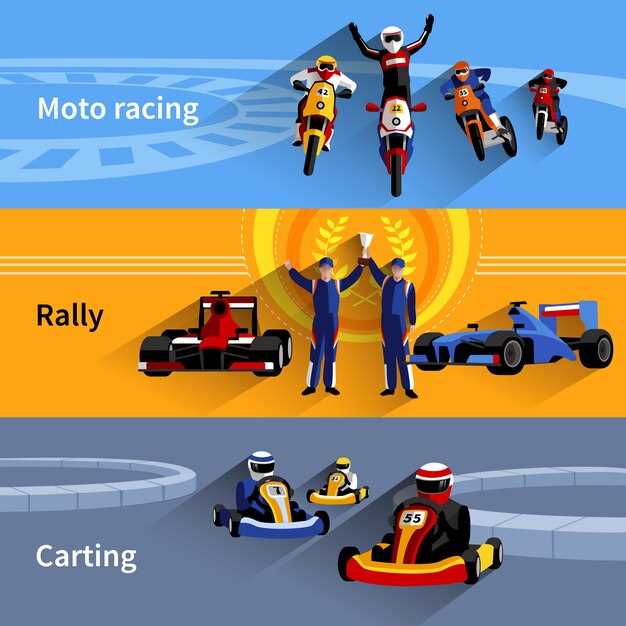
Achieving faster lap times on the racetrack is a pursuit that drives many racing enthusiasts. The journey to mastering racing is not solely dependent on the vehicle’s performance but also on the driver’s skills and techniques. In this article, we will explore effective methods to enhance your racing time through careful analysis and practice.
Every second matters in racing, and understanding the role of technique can make a significant difference. From your approach to corners to the acceleration out of turns, refining your technique is critical. Utilizing the optimal racing line and learning the intricacies of weight transfer will help you gain those vital milliseconds that could set you apart from your competitors.
Moreover, time management during practice sessions is essential. Instead of merely focusing on speed, it’s important to analyze each segment of your lap. By breaking down your performance and identifying specific areas for improvement, you can systematically improve your lap times. Embracing data analysis tools can provide insights that lead to more informed adjustments to both your driving technique and vehicle setup.
Mastering Cornering Techniques for Faster Turns

Cornering is a crucial aspect of racing that can significantly impact your lap times. To master cornering techniques, it is essential to understand the dynamics of your vehicle and the racetrack layout. Approaching corners with the right mindset and skills allows for faster, more efficient turns, ultimately improving your performance.
One key technique is the “brake before turn” method, which involves slowing down before reaching the apex of the corner. This approach allows for better control as you enter the turn, enabling you to maintain optimal speed. The correct braking point varies depending on the track conditions, so practicing on different tracks helps identify the ideal spot for your specific car.
Another important aspect is the racing line, which refers to the optimal path through a corner. Identifying the perfect racing line helps maximize speed and minimize time spent in the turn. Generally, the racing line starts from the outside of the corner, moves toward the apex, and then exits back to the outside. Learning to consistently hit this line will improve your cornering efficiency and lap times.
Weight transfer plays a vital role in cornering as well. Understanding how to shift the weight of your vehicle can enhance grip during turns. As you enter a corner, lean into the turn to place more weight on the front tires, promoting better steering response. Conversely, as you exit, shift your weight back to the rear tires to gain traction and accelerate out of the corner faster.
Finally, practice makes perfect. Spend time on the track experimenting with different techniques and identifying what works best for your driving style. Analyzing your performance using telemetry data can provide insights into your cornering effectiveness, allowing for continual improvement. By refining these cornering techniques, you’ll undoubtedly see an increase in speed and a reduction in lap times.
Optimizing Acceleration and Braking for Better Speed Control

Mastering acceleration and braking is essential for improving lap times on the racetrack. The right technique can significantly enhance speed control, allowing drivers to maintain momentum throughout the course. Understanding how to balance power application and braking forces is crucial for maximizing performance.
Acceleration should be smooth and progressive. Begin by gradually applying throttle as you exit a corner. This technique, known as throttle modulation, minimizes wheel spin and maintains traction. Timing is critical; applying power too early can lead to loss of control, while waiting too long can result in lost momentum. Optimal acceleration involves finding the sweet spot between these two extremes.
When it comes to braking, practice hard, but controlled braking to decrease speed efficiently. Utilize techniques such as threshold braking, which involves applying maximum brake pressure just before the tires start to lose grip. This method allows you to slow down without sacrificing too much speed, ultimately enhancing corner entry. Additionally, understanding the ideal braking point is key; this will differ depending on track conditions and vehicle dynamics.
Combining effective acceleration and braking techniques can help you achieve better speed control on the track. Focus on refining these skills through practice sessions, and always analyze your times to identify areas for improvement. Consistency in these techniques will lead to significantly faster lap times and improved overall performance in racing.
Understanding Tire Management for Consistent Performance
Tire management is a critical element in achieving consistent performance on the racetrack. Proper technique in handling tires can significantly influence lap times and overall racing success. Understanding the dynamics of tire behavior under various conditions helps drivers maintain optimal grip and stability throughout a race.
One key aspect of tire management is monitoring tire pressure and temperature. Correct levels are essential for peak performance; tires that are over or under-inflated can lead to uneven wear and loss of traction. Drivers should also be aware of how tire temperature affects grip. Warmer tires typically provide better performance, which makes the timing of when to push hard or ease off crucial.
Another important factor is the assessment of tire wear. Identifying the degradation pattern helps in making informed decisions regarding pit stops and strategy. A well-planned tire change can mean the difference between victory and defeat. Drivers who can predict when their tires will begin to lose effectiveness can adapt their driving style accordingly, maximizing performance without compromising safety.
Utilizing the right racing technique also plays a vital role in tire management. Smooth steering inputs and gradual acceleration can minimize excessive tire wear. Abrupt maneuvers can lead to overheating and flat spots, ultimately reducing lap time efficiency. Learning to throttle out of the corners as early as possible while maintaining control is a skill that enhances both speed and tire longevity.
In conclusion, effective tire management is an essential discipline for any serious racer. By incorporating techniques that prioritize tire health and understanding the impact of time on performance, drivers can improve their lap times and achieve greater consistency on the track.
